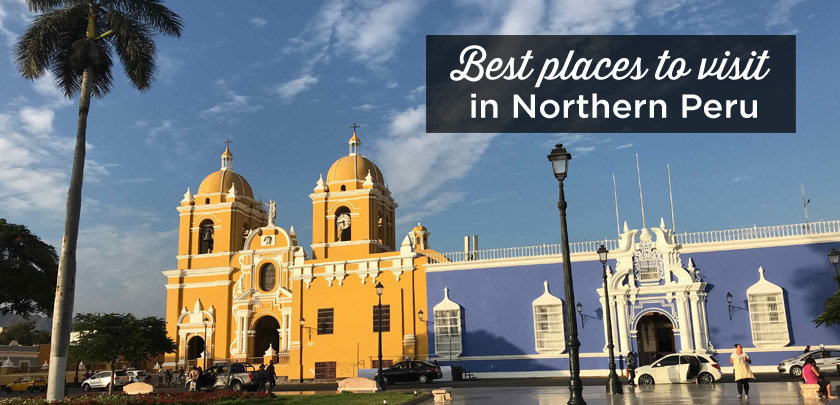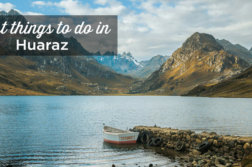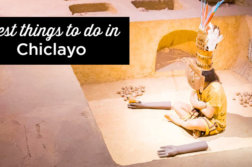Northern Peru: All Best Places to Visit + Where to Stay
Northern Peru is one of the country’s most fascinating and diverse regions—yet it remains one of the least explored by international travelers.
You won’t find the crowds of Cusco or Machu Picchu here, but you will uncover ancient archaeological wonders, stunning landscapes, untouched beaches, authentic villages, and incredible local cuisine.
So why is northern Peru so often overlooked? Because most tourist itineraries focus on the southern highlights. But for those seeking unique experiences, culture, nature, and a slower pace, the north has so much to offer.
I’ve put together this complete guide to the 15 best destinations in northern Peru—from coastal ruins to lush Andean highlands, pristine beaches, colonial towns, and ecotourism gems.
You’ll also find practical travel tips, accommodation recommendations for every budget, and ideas for combining north and south Peru in a single itinerary.
So, what are the best things to do in northern Peru?
Let’s find out!
Sommaire
- Northern Peru: All Best Places to Visit + Where to Stay
- How many days do you need to visit northern Peru? Tips and itineraries
- Which is the best time to travel to northern Peru?
- Is it safe to travel to northern Peru?
- How to move between the cities of northern Peru?
- What to wear for a trip to the north of Peru?
- What is the difference between northern and southern Peru in terms of tourism?
- Map of Northern Peru
- Traveling to Peru? These articles will help you!
1. Chiclayo
After Cusco, Chiclayo is the most important archaeological destination in Peru. Here the Mochica and Lambayeque cultures flourished, leaving behind impressive archaeological sites and world-class museums.
- Huaca Rajada: This is where the tomb of the Lord of Sipán was discovered—an influential Mochica ruler from the 3rd century. He was buried with a warrior, a priest, two women, a child, a dog, a llama, a guard with amputated feet, and an astonishing collection of gold and silver jewelry inlaid with turquoise. Two additional tombs were found nearby: one belonging to a shaman surrounded by religious symbols and ritual objects, and another to a high-ranking Mochica military chief, buried with banners, medals, 90 vessels filled with food and drink, and a number of attendants and llamas.
- Royal Tombs of Sipán Museum: This museum features a remarkable reconstruction of the tombs discovered at Huaca Rajada and showcases a large collection of Mochica artifacts, including the exquisite treasures of the Lord of Sipán.
- Túcume: A vast archaeological site dating back to around the year 700, covering over 540 acres. It contains 26 adobe pyramids, including the monumental Huaca Larga, built from an estimated 130 million bricks. At the center stands Cerro La Raya, a sacred hill offering sweeping views of the fertile valley below.
- Pómac Forest Historical Sanctuary: A protected natural and archaeological area, home to over 90 bird species and 36 pyramids from the Sicán culture. Among them is Huaca Las Ventanas, where the tombs of the Lords of Sicán were uncovered, filled with objects made entirely of gold.
- Chaparri Ecological Reserve: A privately managed conservation area spanning over 85,000 acres. It shelters many endemic and endangered species, including the spectacled bear, South America’s only native bear. A perfect spot for nature enthusiasts—but keep in mind that entry is only allowed with a certified guide.
Where to Stay in Chiclayo
- Hoteles Paraiso Chiclayo: The best budget option in the city center, this 3-star hotel is well located in Chiclayo, with comfortable rooms, TV, Wi-Fi, and buffet breakfast included. From just $23 for a private room with bathroom.
- Wyndham Costa del Sol Chiclayo: One of the top-rated options in Chiclayo, featuring an indoor pool, gym with sauna, rooftop terrace, and restaurant. Located just 5 minutes from the Provincial Park and the airport. From just $76 per night.
- Casa Andina Select Chiclayo: A great choice if you’re looking for more comfort. Slightly outside the center, it offers a quiet atmosphere with free Wi-Fi in common areas, outdoor pool, and spa. Rooms are air-conditioned and include a private bathroom with bathtub and minibar. From $87 per nigh t, breakfast included.
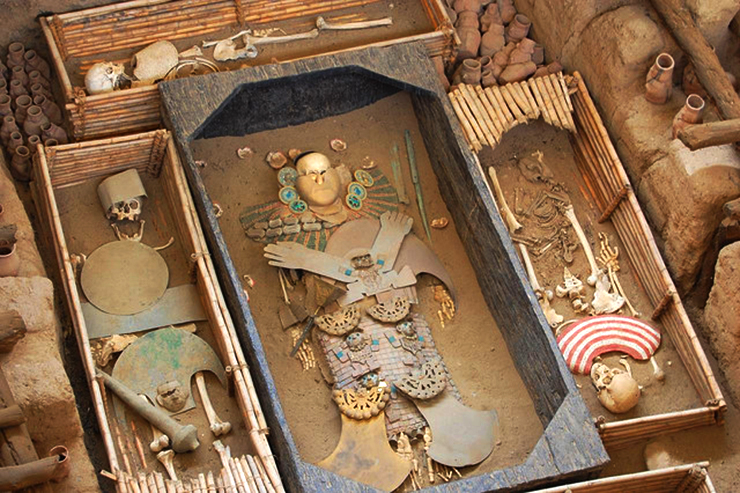
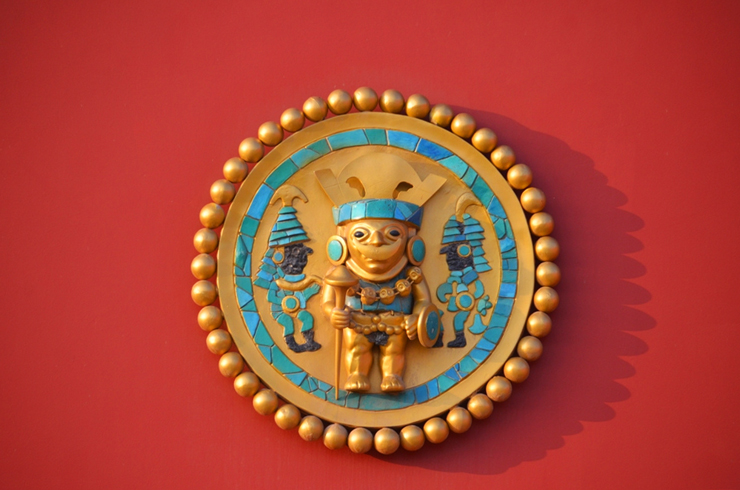
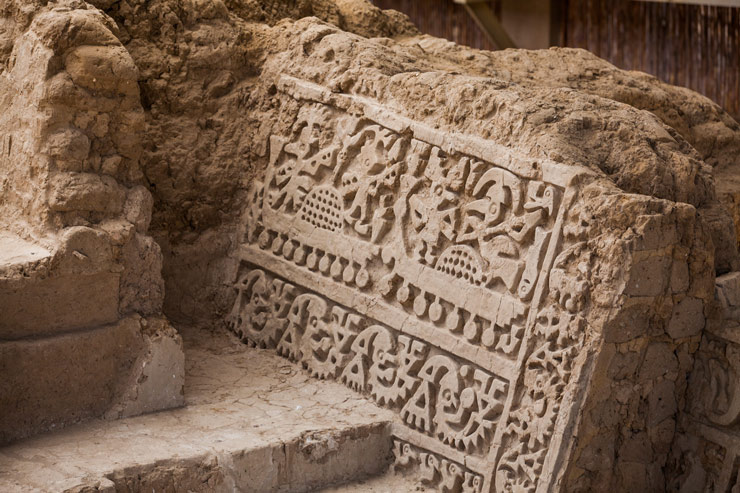
2. Chachapoyas
Located in the Amazon region, Chachapoyas is the ideal starting point for exploring some of northern Peru’s most impressive archaeological and natural treasures.
This tranquil highland town, with its well-preserved colonial architecture, offers an authentic atmosphere without mass tourism. Stroll through its Plaza de Armas, surrounded by traditional wooden balconies, visit the Cathedral of San Juan Bautista and enjoy the leisurely pace of local life.
Excursions to Kuelap, the Gocta Waterfall, the Karajia Sarcophagi or the Sonche Canyon are easily organized from here, making it an excellent base for discovering the northern Andes.
Where to stay in Chachapoyas
There are several accommodation options for all budgets, from backpackers to luxury hotels and eco-lodges. Here are my three recommendations for accommodation in Chachapoyas:
- Chachapoyas Backpackers Hostal Boutique: Ideal for budget travelers. Dorm beds from $8, private rooms from $29. Friendly atmosphere, clean, with a shared kitchen and great location.
- Hotel Dordéan Casona Boutique: Charming boutique house with cozy rooms and tasteful décor. Well located, it’s a great place to relax after your visits. From $59 per night.
- La Xalca Hotel: Well-located 3-star hotel, perfect for resting after a day of exploring. It features a restaurant, garden, and breakfast included. Double rooms from $81.
- Gocta Andes Lodge: Located in Cocachimba with a direct view of Gocta waterfall. An excellent choice for those seeking peace, nature, and comfort. Pool, garden, restaurant, breakfast included. From $162 per night. Perfect for a nature escape.
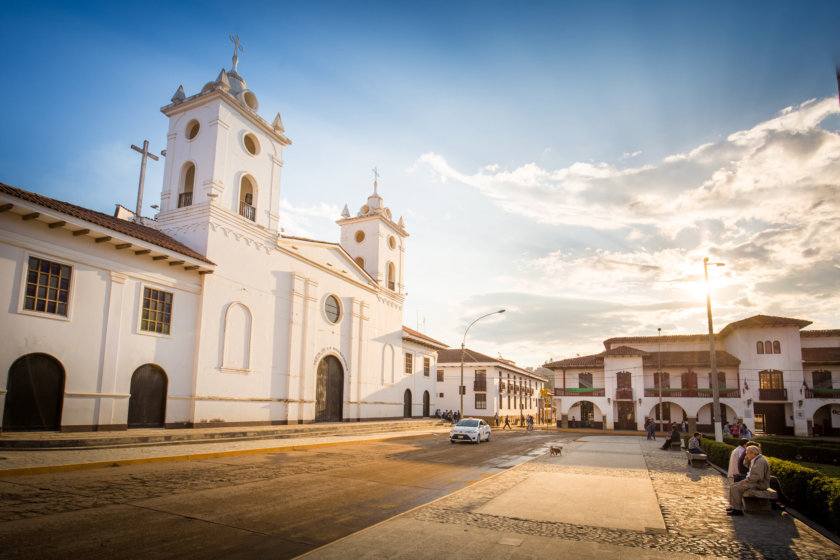
3. Kuélap
Kuélap is one of the most impressive archaeological sites in northern Peru and a must-see if you travel to the region.
Built by the Chachapoyas in the 6th century, this fortified citadel is located at an altitude of more than 9840 feet, surrounded by walls up to 65 feet high.
It is a spectacular place that combines archeology, history and nature. From the town of Nuevo Tingo, you can access by vehicle and then go up by cable car, with breathtaking views of the Utcubamba valley.
If you are in Chachapoyas, the most practical way is to take a 1-day tour to Kuelap. It includes transportation from Chachapoyas (with optional pick-up at your hotel), guide, lunch and guided tour of the fortress.
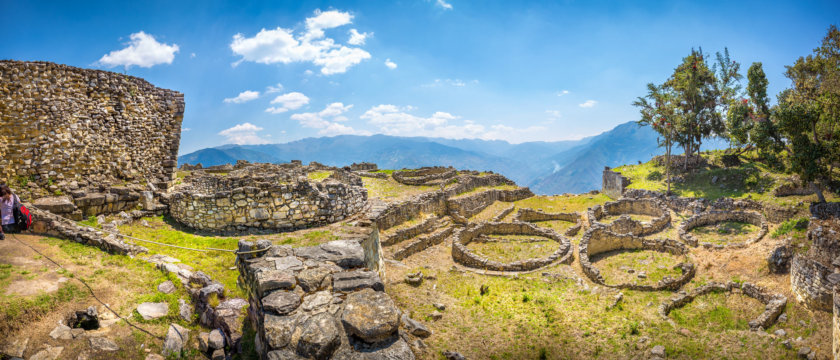
4. Gocta Waterfall
The Gocta waterfall, with its 2,530 feet high, is one of the highest waterfalls in the world and one of the most impressive natural landscapes in northern Peru.
To visit it, you can leave from the towns of Cocachimba or San Pablo, which are about an hour’s drive from Chachapoyas. Both towns offer well-marked routes that take you to the base of the waterfall, through green landscapes, crops, viewpoints and cloud forests.
The hike from Cocachimba (the most popular) takes about 2h to 2h30 per way at a leisurely pace. It is not extremely difficult, but there are some climbs and it can be slippery if it has rained, so good shoes are recommended. From San Pablo, you can also do a circular route passing by the two waterfalls.
During the tour it is common to see hummingbirds, monkeys and many species of birds, so don’t forget to bring binoculars if you are interested in wildlife observation.
If you prefer a more organized visit, you can also book a tour from Chachapoyas that includes transportation, guide and lunch:
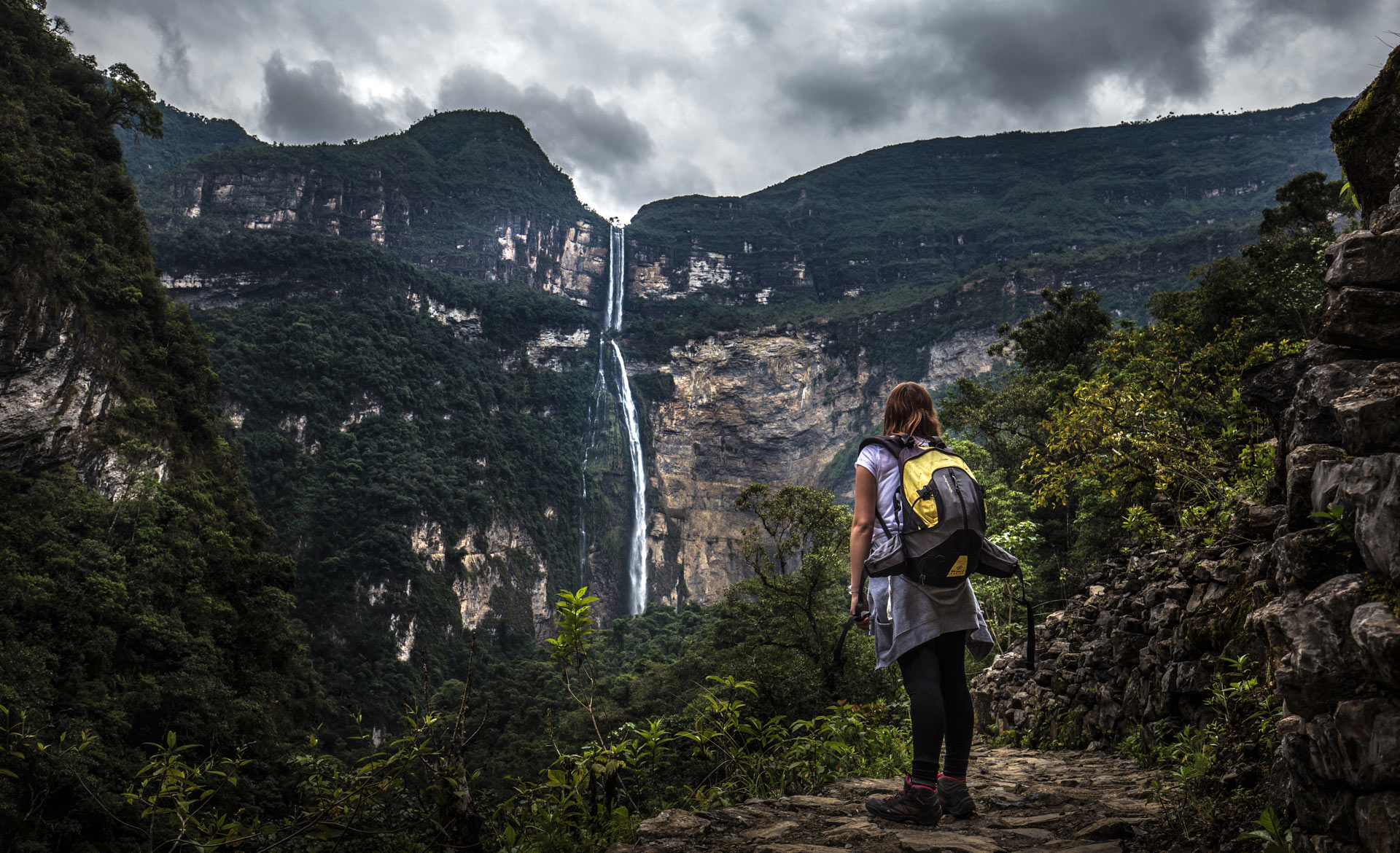
5. Sarcophagi of Karajia
The Karajía sarcophagi are one of the most enigmatic and fascinating vestiges of the Chachapoyas culture.
They are anthropomorphic figures up to 8 feet high, placed in almost inaccessible cliffs, where the most important members of the elite were buried.
These sarcophagi are made of mud, straw and stones, and decorated with stylized faces and geometric motifs. Their location, on the edge of a cliff, not only protected them from looting, but also reflects the Andean cosmovision, in which death was closely linked to the natural and spiritual world.
To visit them, you will leave from the town of Cruzpata, approximately 1h30 from Chachapoyas. From there, it is a 30 to 45 minute walk. The trail is not very difficult, although there may be some mud if it has rained, so it is recommended to wear appropriate shoes.
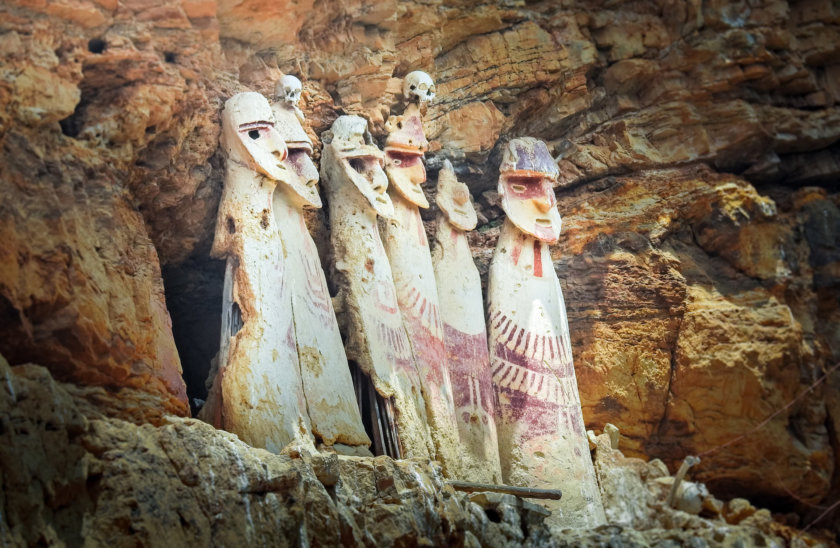
6. Sonche Canyon
Located just 20 minutes from Chachapoyas, the Sonche Canyon is one of the most spectacular landscapes in northern Peru. From the lookout point you can enjoy a breathtaking view over a deep canyon surrounded by mountains and vegetation.
To get there, you can take a colectivo (shared minibus) from Chachapoyas to Huancas for 5 soles. The trip takes about 20 minutes, and from the town square you only have to walk 5 minutes to the lookout point. The entrance fee is 6 soles.
Once at the viewpoint, you can opt for a short hike or follow a trail along the canyon for several miles. We recommend arriving early in the morning to avoid the fog, enjoy the clear landscape and have the place almost to yourself.
On the way back, it is possible to walk back to Chachapoyas (1h30 downhill), enjoying the beautiful scenery. You can also take the opportunity to visit the pottery workshops in Huancas, although demonstrations are not always available.
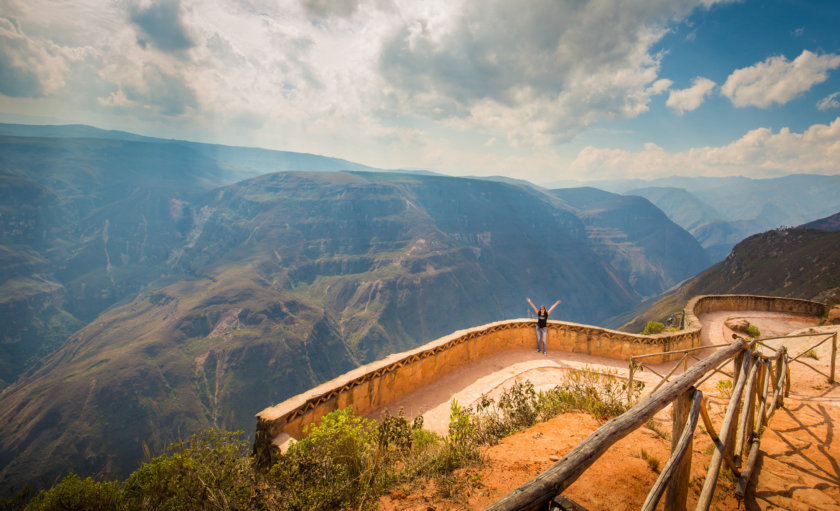
7. Revash and Leymebamba
Leimebamba is a quiet village surrounded by mountains, ideal for those who love archeology and pre-Inca history.
Here you will find the Leymebamba Museum, which preserves more than 200 mummies and funerary objects recovered from the Lake of the Condors. The museum is well presented, modern, and offers a fascinating insight into the Chachapoya culture.
From Leymebamba you can also visit the Revash Mausoleums, collective tombs built into cliffs, which resemble small houses painted white and red.
It is reached on foot from the town of San Bartolo, located about 40 minutes from Leymebamba by vehicle. The hike takes about 2 hours round trip, following a well-marked trail, and offers spectacular scenery of the valley.
If you want to discover these two places without worrying about logistics, you can also book an organized tour from Chachapoyas that includes transportation, guide and entrance fees:
Where to stay in Leimebamba
Depending on your itinerary, you could stay in Chachapoyas (2h45), otherwise Yaku Wasi is the best option in Leimebamba!
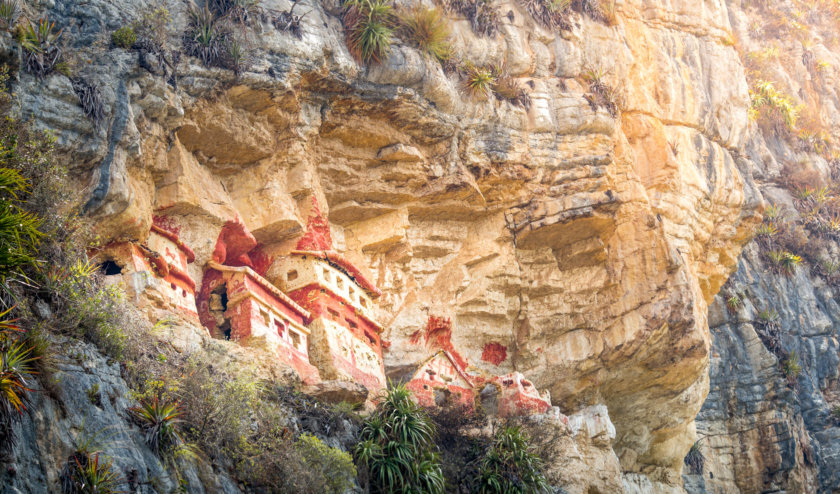
8. Cajamarca
Cajamarca is known for its dairy products and for its colorful carnival, considered one of the most important in the country. It is celebrated at the beginning of March and has earned it the title of “Capital of the Peruvian Carnival”.
But beyond the party, there are historical and archaeological sites that are really worth visiting.
What to see in Cajamarca:
- The Ransom Room: here the Inca Atahualpa was imprisoned after his capture by Pizarro. He offered to fill this room with gold and silver in exchange for his freedom, but was never released. It is the only Inca vestige in Cajamarca, a few steps from the Plaza de Armas.
- Cumbe Mayo: an impressive forest of volcanic stones with figures that look like priests in procession. Here is an aqueduct carved into the rock by the Cajamarca culture more than 3000 years ago, probably for ceremonial purposes.
- Ventanillas de Otuzco: ancient burial site of the Cajamarca culture, with more than 300 niches carved into the rock. The Incas would have reused some cavities to preserve food thanks to their natural freshness.
Where to stay in Cajamarca
- Shinawasim: the best budget accommodation in Cajamarca, located near the center. Good atmosphere, shared kitchen and rooms from only 8$ in dormitory or 28$ USD for private room.
- El Portal del Marques: an excellent value for money hotel in a colonial mansion just one block from the Plaza de Armas. Includes free airport transfer and breakfast, from 55$ USD per night.
- Costa del Sol Wyndham Cajamarca: the best option if you are looking for more comfort. It has an indoor pool, sauna, gym and a restaurant overlooking the Plaza de Armas. From 81$ USD with buffet breakfast included.
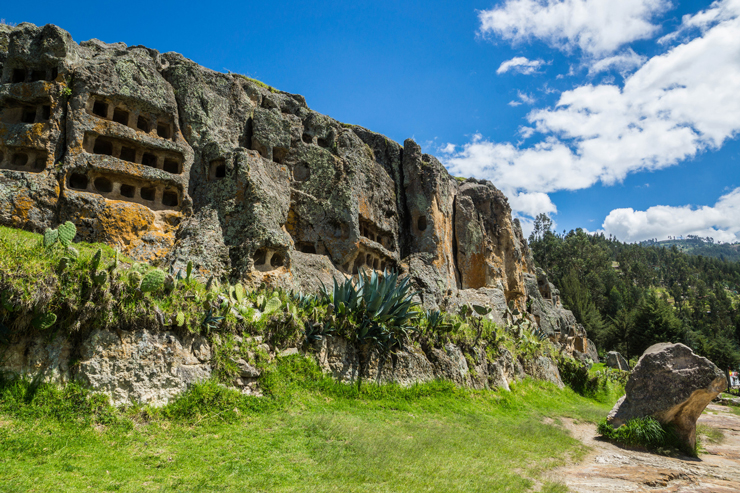
9. Huaraz
Huaraz is a very pleasant Andean city, but what really attracts travelers is the impressive nature that surrounds it. The region is famous for its turquoise lagoons, snow-capped mountains and trekking routes in the Cordillera Blanca, considered one of the most beautiful in the world.
Among the most popular day hikes are Laguna 69, one of the most spectacular in all of Peru; Laguna Parón, surrounded by snow-capped peaks and accessible without great physical effort; Laguna Churup, perfect for those looking for a moderate challenge; and Pastoruri Glacier, which allows you to see a receding glacier up close.
There are also shorter options such as the hike to Laguna Wilcacocha, ideal for acclimatization while enjoying panoramic views of the entire mountain range.
For the more adventurous, the region also offers multi-day treks such as the famous 4-day Santa Cruz Trek and the challenging Huayhuash circuit, which can take between 8 and 12 days.
There are also less traveled alternatives such as Quilcayhuanca-Cojup or the Olleros-Chavin route.
And if you are interested in combining culture and nature, do not miss the archaeological site of Chavín de Huántar, an impressive pre-Inca ceremonial center with tunnels, galleries and sculpted nail heads, considered a World Heritage Site by UNESCO.
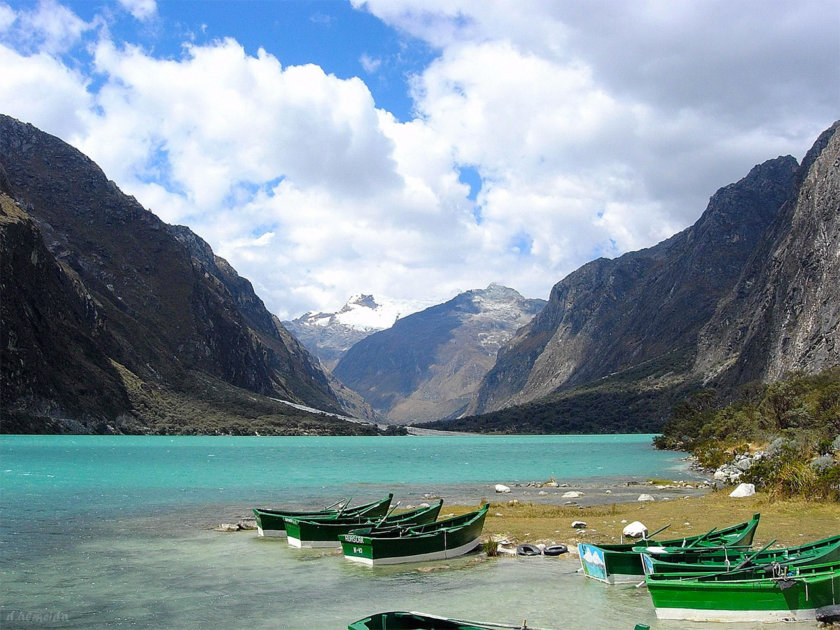
10. Trujillo
Trujillo is one of the most interesting destinations in northern Peru. Considered the cultural capital of the country, it is famous both for its archaeological wealth and for being the cradle of the marinera, one of Peru’s most emblematic traditional dances.
Two of the great pre-Inca civilizations developed here: the Mochica and the Chimu.
Today, you can visit some of the most impressive archaeological sites in the country:
- Huaca del Sol and Huaca de la Luna: political and religious centers of the Mochica culture, with more than 1500 years of history. They preserve colorful murals, plazas and terraces, and excavations are still ongoing.
- Chan Chan: the largest adobe city in the Americas and a UNESCO World Heritage Site. It was the capital of the Chimu people and preserves walls decorated with reliefs of birds, fish and geometric figures.
- Huaca Arco Iris (Huaca del Dragón) and Huaca Esmeralda: temples with reliefs of animals and mythological figures, which reveal the symbolism and religious beliefs of the Chimus.
- Trujillo’s historic center: full of colonial houses with colorful facades, the Plaza de Armas and its iconic yellow cathedral. You can also visit the Museum of Archaeology (entrance fee 5 soles) that presents thousands of years of history of northern Peru.
- Huanchaco: a former fishing village that today is an ideal destination for surfers. Perfect to spend the night in a relaxed atmosphere in front of the sea.
Where to stay in Trujillo
- Hostal Don Alberto: The best option if you’re looking for a budget-friendly hotel in Trujillo. Family-run, well located in the city center, with comfortable beds and free parking. From just $20 per night for a private room.
- Costa del Sol Trujillo Centro: With a prime location right next to the Plaza de Armas, this hotel offers comfort and privacy in a charming historic building. Enjoy the outdoor pool, fitness center, and on-site restaurant. Just 10 minutes from pre-Inca ruins. A great value for money. Rooms from $71.
- DoubleTree by Hilton: This is the best hotel in Trujillo, with comfortable rooms, outdoor pool, quality restaurant, bar, and sauna. Breakfast included from $109 per night.
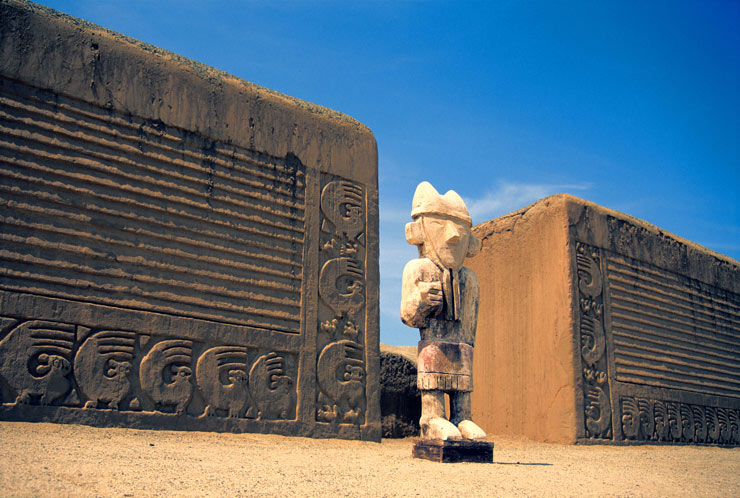
11. Mancora
Mancora is the most famous beach destination in northern Peru, ideal for those seeking sun, sea and relaxation. With a warm climate all year round, it is perfect for both surfers and those who just want to relax in front of the Pacific Ocean.
The beaches stretch from Punta Sal to Vichayito, each with its own atmosphere. Punta Sal is quiet and family-friendly, Mancora is more lively and known for its nightlife, and Vichayito offers a more exclusive and relaxed experience.
Among the best activities are surfing or kitesurfing lessons, beachfront yoga and massage sessions, horseback riding on the beach, trips to Cabo Blanco – the fishing village that inspired Hemingway – and whale-watching tours between July and October.
You can also explore the Tumbes Mangroves or the Cerros de Amotape National Park if you are interested in ecotourism.
Where to stay in Mancora
- Kimbas Bungalows Mancora: A Balinese-inspired hotel with tropical ambiance, just a few steps from the beach and restaurants. From 46$ USD per night with excellent breakfast included.
- Ecolodge Mancora: Small ecological and chic hotel located in the ravine of Mancora, perfect to disconnect in a natural environment. Rooms from 60 to 100$ USD per night depending on the season.
- Sunset Mancora: An elegant and relaxed hotel in front of Las Pocitas Beach, ideal for a romantic getaway. It stands out for its excellent Italian restaurant, swimming pool overlooking the sea and its quiet environment. Rooms and suites from 115 to 150$ USD per night.
12. Casma
Although not very touristy, the region is home to some of the oldest sites on the continent.
The most impressive is Cerro Sechin, a temple from 1600 BC decorated with reliefs of warriors and human body parts. The site has a unique aura, and climbing to the top of the hill to see the structure from above and the surrounding green region was one of my favorite moments.
You can also visit the Max Uhle museum to see ceramics from the Chavin, Wari and Chimu cultures.
The Casma region is home to several other little known archaeological sites such as Sechin Bajo (built 3500 years ago), Mojeque, and Chankillo, considered the oldest solar observatory in the Americas.
There are also pre-Columbian lines in Pampa Colorada, even older than those of Nazca. It is a fascinating destination for archeology lovers.
But what really won me over was the coast. Just 20 minutes away is Tortugas Bay, a quiet, unpretentious place, frequented mainly by Peruvian families.
Here you can take a boat excursion to discover La Grama Beach, watch penguins and visit a hidden cave with access from the sea. The hike to the cave is quite an adventure and the scenery is absolutely spectacular.
If you are interested in getting to know this less touristic region rich in history, don’t miss My Complete Guide to Casma with all the archaeological sites and recommendations to visit Tortugas.
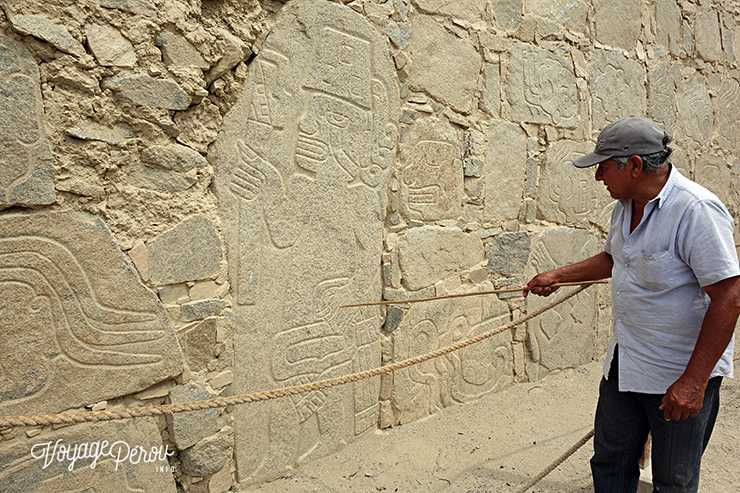
13. Caral, the oldest city in America
Although not very touristic, Caral is one of the most impressive archaeological sites in north-central Peru. Declared a World Heritage Site by UNESCO, this city was built more than 5000 years ago, making it the oldest known civilization in the Americas.
It is contemporary to Mesopotamia and Egypt, but remains unknown to most travelers.
Located in the Supe valley, just 125 miles north of Lima, Caral impresses with its six pyramids, circular plazas, amphitheaters and ceremonial platforms, all organized with such advanced urban planning that it even resisted earthquakes.
The most amazing thing is that its inhabitants did not know ceramics or metals, but they had already mastered architecture, irrigation and cotton weaving.
If you prefer to go on your own, take a bus to Supe Pueblo and then a colectivo or cab to the site.
You can also stay in Barranca, enjoy the beach and visit Caral early the next day.
14. Piura
Located in northern Peru, near the border with Ecuador, Piura is a city full of history, human warmth and good weather. It was the first city founded by the Spanish in the country, and today it is known as the “City of the Eternal Sun” and the “City of Hospitality”.
Although many people only see it as a stopover before reaching the beaches of Mancora, Piura and its region have a lot to offer. You can stroll through its historic center, visit the colorful markets of Catacaos, explore artisan villages like Chulucanas, discover amazing landscapes in Canchaque or cool off in the waterfalls of Caracucho.
If you are looking for nature, you can visit the Sechura desert, the Negritos Salt Flat or the Cerros de Amotape National Park. And if you are interested in spiritual tourism, the town of Huancabamba and the sacred lagoons of Las Huaringas are a traditional folk-medicine destination.
Piura is also an excellent gastronomic stop, with cuisine based on fresh seafood and local flavors worth trying.
Where to stay in Piura
Here are my recommendations for accommodation in Piura:
- Hotel Apart Hacienda: Very clean 3* hotel with friendly staff, ideal for a simple, comfortable stay in Piura. Double room from 46$ USD, breakfast included.
- Hotel Costa del Sol Wyndham Piura: Located just a few minutes from the Plaza de Armas, this chic hotel offers a lovely terrace with swimming pool for relaxing after a day of exploring. From 65$ USD per night.
- Los Portales Hotel Piura: Magnificent 4* hotel full of charm, in the heart of the city, right next to the Plaza de Armas. From 68$ USD per night with breakfast. My favorite of the selection.
- Casa Andina Private Collection Piura: Peaceful 5* hotel, perfect for relaxing, with a superb swimming pool and top-notch service. Double room from 98$ USD, breakfast included.
15. Tumbes
Tumbes is the northernmost department of Peru, bordering Ecuador, and is known for its unique natural landscapes, its warm climate all year round and its beaches little known by international tourists.
The region is home to the Tumbes Mangroves National Sanctuary, an ecosystem of great biodiversity where you can take boat trips to observe birds, crabs and other species.
There is also the Cerros de Amotape National Park, which extends between Tumbes and Piura and is perfect for ecotourism lovers, with hiking trails and endemic fauna.
Tumbes has beautiful beaches such as Punta Sal, Zorritos and Puerto Pizarro:
- Punta Sal is the best known for its calm and warm sea, ideal for swimming and resting
- Zorritos offers a relaxed atmosphere, perfect to escape from mass tourism
- In Puerto Pizarro you can visit the Isla de los Pájaros (Bird Island) and visit the crocodile farm.
Don’t miss the famous black shell ceviche, a typical dish of the area!
How many days do you need to visit northern Peru? Tips and itineraries
Northern Peru is a vast and very diverse region, so the time you need to visit it depends a lot on what you want to see and your traveling pace.
If you only have a few days, you can focus on a particular area, such as the beaches of Mancora and the Tumbes Mangroves, or take a cultural getaway to Trujillo and Chiclayo to discover the Mochica and Chimu heritage.
But if you really want to explore northern Peru – combining beaches, archaeological sites, nature and local culture – the ideal is to dedicate at least 10 days. With this time you can follow a classic route that connects Trujillo, Chiclayo, Chachapoyas and Mancora.
For a more complete trip, the ideal would be to have between 15 and 20 days, which will allow you to discover lesser known places such as Cajamarca, Piura, Caral, or even go as far as Huaraz, if you decide to extend your route to the Callejón de Huaylas.
You won’t do everything, but you will be able to visit the essentials: Lima, Arequipa, Lake Titicaca, Cusco, and experience an exciting foray north to Chiclayo and Trujillo.
Which is the best time to travel to northern Peru?
The best time to visit northern Peru is during the dry season, from May to November. In those months the weather is more stable, with clear skies and less rain, ideal for enjoying the beaches as well as the Andean and archaeological sites.
The north coast, such as Mancora, Punta Sal or Tumbes, has a warm climate all year round, so you can also visit at any time. However, if you plan to explore areas such as Chachapoyas, Cajamarca or the highlands of Piura, it is best to avoid the rainy months.
Between December and April, rains can cause huaycos (landslides and road flooding), especially in mountainous areas. This can hinder or even block road access to certain regions.
For a smooth and safe trip, it is best to plan your route between May and November, especially if you want to travel overland between various destinations in the north.
Is it safe to travel to northern Peru?
Yes, in general traveling to the north of Peru is safe, both for national and international travelers.
The main tourist cities such as Trujillo, Chiclayo, Cajamarca or Chachapoyas have good infrastructure and receive visitors all year round.
As in any destination, basic precautions are recommended: avoid poorly lit areas at night, do not show valuables, and use reliable transportation services.
In rural areas or areas of difficult access, such as some trekking routes or remote villages, it is important to be informed in advance about the state of the roads, especially during the rainy season, when landslides or mudslides may occur.
It is always a good idea to travel with travel insurance, carry a copy of your important documents, and if possible, inform someone you trust about your itinerary.
How to move between the cities of northern Peru?
Getting around northern Peru can be a challenge due to the large distances between destinations, the varied geography and the state of the infrastructure.
The main options for travel are by plane, bus and rented car.
Bus
Bus is still the most common way to travel, with several companies connecting major cities such as Trujillo, Chiclayo, Piura or Tumbes.
Some of the best bus companies, such as Cruz del Sur or Civa, offer comfortable and safe routes, even with night buses that save time and a night in a hotel.
It is also possible to take internal flights, for example between Lima and Piura, or between Lima and Trujillo, which can save a lot of time if you have a tight itinerary. LATAM, SKY and JetSmart are the main airlines operating these routes.
Plane
Planning a trip to Peru? To get the best deal on your flights, I recommend using this flight comparison tool, in partnership with Skyscanner.
It’s the easiest way to find the lowest prices for both international flights and domestic flights within Peru—ensuring you pay the best rate with no hassle!
Car
Another excellent option, especially if you are interested in making a personalized itinerary and visiting less accessible areas, is to rent a car.
Driving in northern Peru offers you greater freedom to explore at your own pace, although you should be aware that some roads may be in poor condition and that during the rainy season (December to April) landslides and huaycos can occur.
It is important to be well informed before taking the route.
Personally, I always use Booking.com Cars for a few key reasons:
- Easily compare prices from all major rental agencies in one place—finding the best deal has never been easier!
- Free cancellation on most bookings, so you can reserve with peace of mind.
- Better insurance coverage at a lower price than rental companies—saving you money with no extra effort.
Click the button below to find the best car rental deals in Peru:
What to wear for a trip to the north of Peru?
It depends a lot on the region you are going to visit. In coastal areas such as Mancora, Piura or Tumbes, the weather is warm all year round, so you will need light clothing, a hat, sunglasses and sunscreen.
But if you go to mountain areas like Huaraz, Cajamarca or Chachapoyas, the weather can change a lot between day and night, and between sun and shade.
I recommend that you bring several layers of clothing so that you can easily adapt to temperature changes.
Do not forget to include a raincoat if you travel during the rainy season (December to April), and some warm clothing even if it is summer, especially for the night at altitude.
And of course, a pair of trekking shoes is a must if you plan to hike.
What is the difference between northern and southern Peru in terms of tourism?
The south of Peru is much more touristic and internationally known. It is where you find the classic destinations such as Lima, Arequipa, Colca Canyon, Lake Titicaca, Cusco, the Sacred Valley and, of course, Machu Picchu.
These places are well connected, with good tourist infrastructure, a wide range of hotels and organized tours.
The north of Peru, on the other hand, is less visited, although it has an extraordinary natural and cultural wealth.
It is home to some of the oldest archaeological sites in the Americas, beautiful beaches and unique ecosystems such as mangroves and cloud forests. It is a more authentic and less crowded region, ideal if you are looking to get off the beaten track.
In short, the south is ideal for a first trip to Peru, while the north is perfect if you already know the basics or want a different, more local and less touristy experience.
Map of Northern Peru
Here you can see the main destinations in northern Peru that I mention throughout the article.
Rent a car
Book entrance tickets and guided visits
Take a travel insurance
Book a tour
✈️Book your flight
Traveling to Peru? These articles will help you!
Discover all my articles about Peru: All my tips and itineraries to plan your trip in one place!
40 EPIC Things to Do in Peru (+ My Best Tips)
- Chachapoyas: The 12 Attractions You Shouldn’t Miss
- Chiclayo: All best places to visit + Where to stay
- Itinerary: 5-6 days in Peru – Lima, Arequipa, Colca Canyon, Cusco, Sacred Valley and Machu Picchu
- Itinerary: 7-8 days in Peru – See the maximum in one week
- Itinerary: 10 days in Peru – The ideal itinerary for a short stay in Peru
- Itinerary: 2 weeks in Peru – The classic route
- Itinerary: 15 days in Peru – An itinerary that includes northern Peru
- Itinerary: 3 weeks in Peru
- Itinerary: 3 weeks in Peru + Bolivia – The best itinerary for visiting both countries
- Itinerary: 1 month in Peru – What to do and see in 30-31 days
You’re using Pinterest? Here is the picture to pin!



